This photograph is a case of getting something better than what I wanted.
I was in Jamaica visiting my sister, and I knew this was rare travel and photo opportunity for me. I specifically got my camera well in advance for this trip. I spent months practicing with the camera, and photography in general, so I could really knock this trip out of the park, photographically.
I didn’t get the exact shot I had in mind, but instead I got something far more dramatic and appealing.
Upon arriving to the place we were staying, the skies were very dark, our villa was remote, and I had time to get a shot I always wanted — a sky full of star trails.
After hauling our stuff in, I walked around looking for the perfect dark place to put down my tripod and grab a shot. Ultimately, one balcony proved perfect for my needs. It had the perfect window of foliage out to the ocean, and it seemed dark — like… really dark.
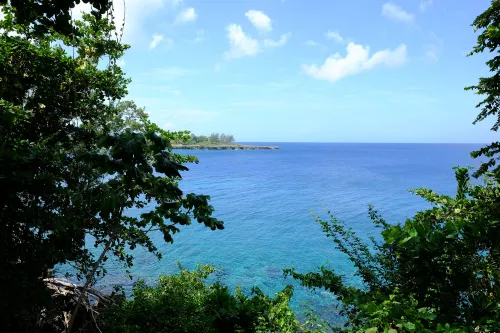
I plunked down my tripod, attached a shutter release, and got to work. I originally wanted to capture some star trails, with a couple bits of lightning, but I wasn’t quite getting the results I wanted:
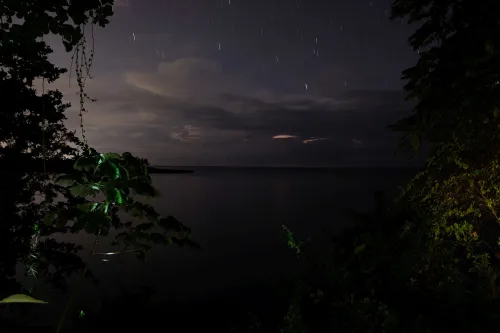
I noticed that the foliage was being lit unevenly from interior lights. So I closed the curtains as much as possible and got out my flash unit so I could strobe the plants in the foreground. I had a remote unit that I could essentially paint the foreground with. I tried popping the flash 3-4 times per zone of foliage, well away from the camera. I shortened the exposure, simply because I wanted to see how the foliage would work in the final exposure.
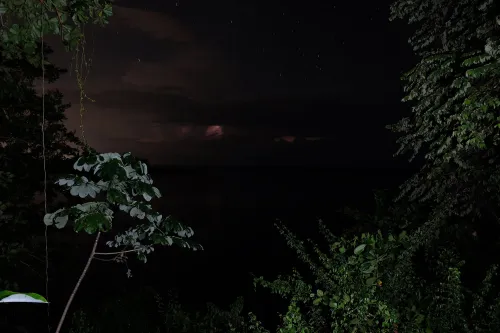
The image was far too dark, and the star trails looked meager at best. I was able to bring out the foreground of the picture, but the underside of the plants looked a bit overwhelming, and I figured that may have been from using the flash so many times.
For the next image, I tried popping the flash near the lens twice: once 30 degrees to the left, and once 30 degrees to the right. I wanted to see if that would help with shadows. I also moved the ISO to 1600 from the base ISO of 200. I wanted to see if I could use fewer flashes from my flash unit, and maybe I’d like how that looked.
I didn’t.
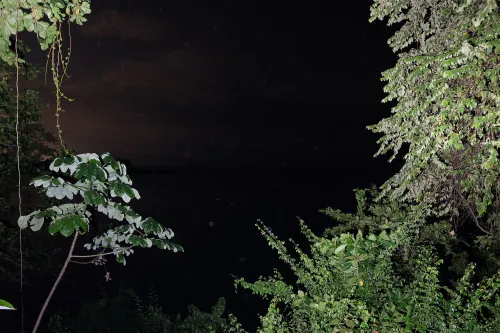
The background was completely gone, I lost the star trails, I was capturing dust in the air, and the underside of the foliage was highly prominent. The camera sensor was so much more sensitive that I did not need to run the shutter as long, losing the star trail effect.
It was an experiment, and a failed one, but that’s the beauty of digital. I was able to learn, and move on to the next exposure. I decided to go back to how I did the first picture and its 240″ exposure time. This time I opted for a 300″ exposure time, and I popped the flash 2 times per zone from as far away from the camera as possible.

This picture came out much nicer, but I did seem to catch any of the lightning strikes, and the water seemed too dark. There wasn’t enough foreground and background separation. And most importantly, I wanted longer star trails.
I decided to go for broke and I set the exposure for ten minutes. My thinking was, raise the exposure level, and I can count on double the length of the star trails. I knew there were some unknowns, but I felt pretty confident that at this point that I could nail the exposure and get a pretty good picture. And to be honest, I had been out for over an hour taking these pictures, I knew everybody inside was probably wondering what I was actually doing on the porch. I took this picture the same way as the previous one, but this time I spent an extra five minutes looking over the ocean.
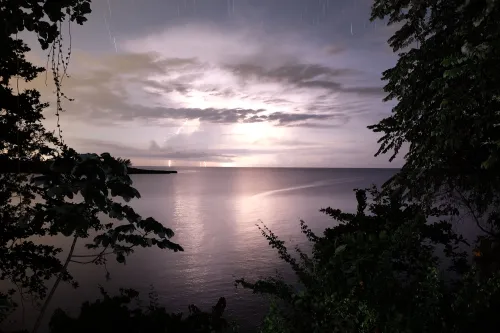
The shot came out great. The star trails were as long as I wanted, but they were secondary to the lightning strikes I captured. They went from sky to sea, and reflected nicely to boot!
I wanted to capture a nice star trail shot with a touch of lightning and foreground, but instead I got shot of lightning storms brewing off the coast, with a touch of other elements. It captured the essence of Jamaican hurricane season nights as I experienced it.
Ultimately, I got a picture I was really happy with, and the process reinforced the power of persistence, as well as luck. A mix between serendipity, planning, and experimentation can yield a wonderful image.
Comments